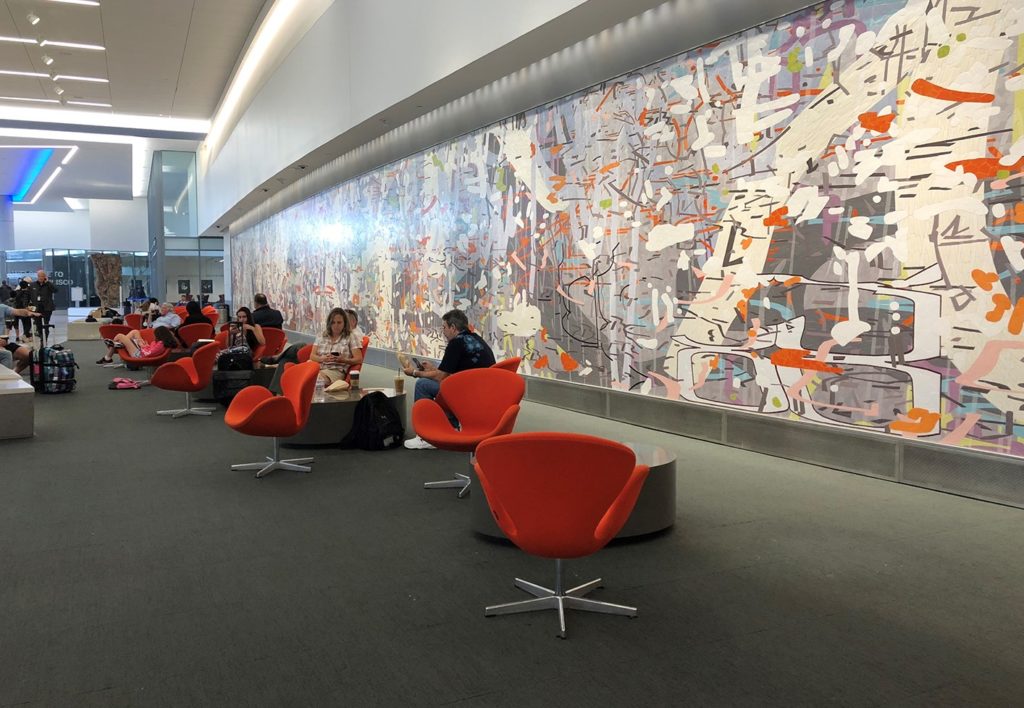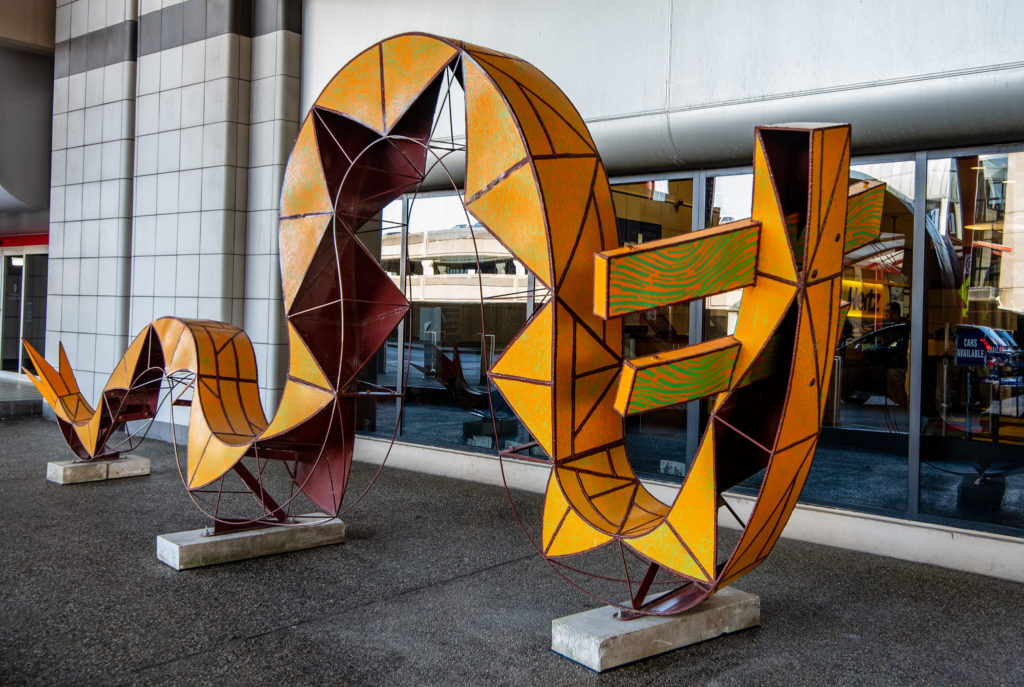The Art of Making Travel More Enjoyable
As airports modernize, thriving arts programs help enhance passenger experience
By Rachel Saul Rearick
Published February 13, 2020
Read Time: 3 mins
Imagine walking through a colorful sculpture garden featuring works by prominent artists John Newman and Isaac Witkin. Or picture yourself learning something new about renowned furniture maker Isamu Noguchi as you peer through exhibition glass to take a closer look at the seamless connections on one of his chairs.
Maybe those daydreams were set in a field at a famous sculpture park, or inside a highbrow art gallery. But in reality, you can have those experiences at Dallas Fort Worth and San Francisco international airports, respectively.
Art programs are popping up in airports across the U.S., featuring everyone from local craftspeople to well-known artists who earn seven-figure commissions. Sometimes the work is featured in a display and sometimes it’s organically integrated into the very infrastructure of the facility.
But do we really need art in airports?
Public art improves the passenger experience, reduces the stress of travel and even entices travelers to spend more money on concessions, airport art directors say. As U.S. airports invest tens of billions in modernization projects, planners look to art as one way of reflecting the cultural experience of the regions they serve.
“The rewarding development of new and ongoing relationships with professional artists from our abundant creative communities in Oregon and Washington State ensures that the cultural dialogue and public rotating exhibitions at the airport are fresh, interesting, contemporary, and reflective of the region,” said Wendy Given, the art coordinator at Portland International Airport.

Travelers at San Francisco International Airport (SFO) sit alongside a mural designed by artist Amy Ellingson. (Photo by Rachel Saul Rearick)
Similarly, Pittsburgh International Airport also focuses on providing a platform for its regional creative community. Visual artists communicate through rotating exhibitions and performing artists interact directly with travelers from around the world.
As PIT’s Terminal Modernization Program ramps up, officials are exploring ways the new terminal can showcase regional artwork, integrate the highest caliber permanent art installations and involve local small-match artisans for the design of fixtures and finishes.
Art as good business
Art in airports isn’t a new phenomenon; Leah Douglas founded the exhibitions program at Philadelphia International Airport in 1998 with the mission of exhibiting work by artists and arts institutions from the region to promote its vibrant cultural life to visitors.
Douglas, the director of exhibitions at PHL, said art in airports is about more than aesthetics – it’s good business, too.
“In 2010, J.D. Power reported that happy passengers on average spend 45 percent more money while in the airport,” she said. “When passengers feel more at ease and relaxed while in an airport, there is a correlation to increased passenger loyalty, higher spending at concessions, and it creates an overall positive image of the airport and its city.”

As part of Pittsburgh International Airport’s Art in the Airport program, the work of local, national and international artists is on display throughout the terminal. (Photo by Beth Hollerich)
Now think back to when you imagined yourself admiring sculpture or ogling furniture design. Doesn’t it makes sense that those experiences are well-suited for an airport – because they provide moments of calm. And who couldn’t use a little relief in the stressful and sometimes mundane airport environment?
Art can embody the symbiotic relationship between an airport and its region, and program directors understand how crucial that can be to elevating the passenger experience.
“In many ways, public art is the most important art we create. It’s how we present our culture, community, and home to others and to ourselves,” said Madeline Gent, executive director at the Associated Artists of Pittsburgh.
“More and more, as we recognize the stories of our neighbors both next door and across the sea, public art is crucial to how we listen, see, learn and understand.”
Watch
This Next
Read
This Next





